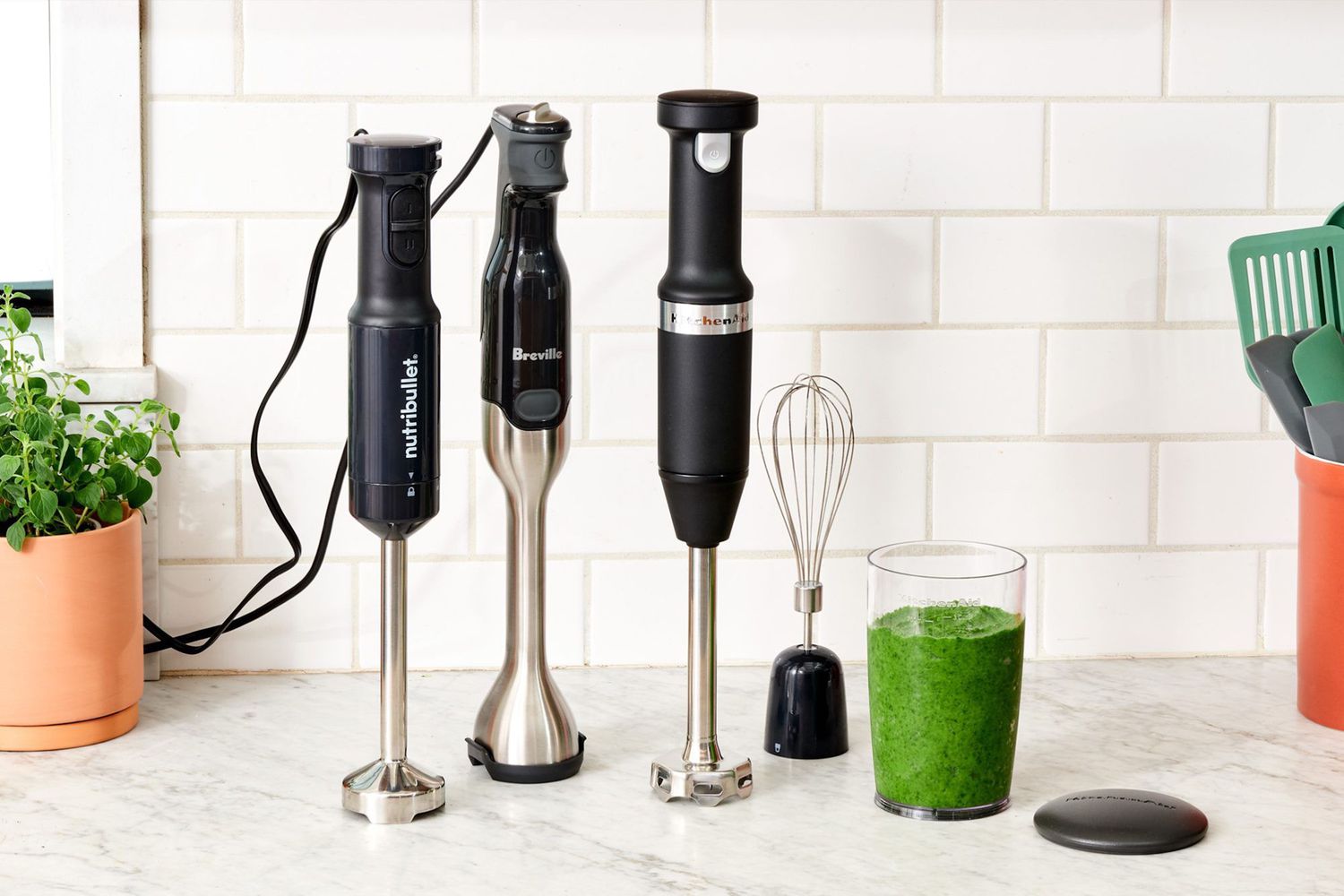

Articles
What Is An Immersion Blender?
Modified: October 20, 2024
Learn more about immersion blenders and their uses in this informative article. Discover how these handy kitchen appliances can make your cooking experience easier and more efficient.
(Many of the links in this article redirect to a specific reviewed product. Your purchase of these products through affiliate links helps to generate commission for Storables.com, at no extra cost. Learn more)
Introduction
Welcome to the world of immersion blenders, where convenience meets versatility in the realm of kitchen gadgets. Whether you’re an amateur cook or a seasoned chef, an immersion blender is a must-have tool in your culinary arsenal. This compact and handy device, also known as a stick blender or hand blender, has gained popularity in recent years due to its ease of use and ability to perform a variety of tasks with minimal effort.
In this article, we will take a closer look at immersion blenders and explore their features, functions, pros and cons, popular brands, common uses, safety tips, and maintenance guidelines. By the end of this article, you’ll have a comprehensive understanding of what an immersion blender is and how it can revolutionize your cooking experience.
So, let’s dive in and discover the wonders of the immersion blender!
Key Takeaways:
- Immersion blenders are versatile, portable, and easy to use, making them a valuable addition to any kitchen. They simplify tasks like blending soups, making smoothies, and whipping cream, offering convenience and efficiency.
- Safety and maintenance are crucial when using immersion blenders. Following safety guidelines, cleaning the blender regularly, and storing it properly can ensure its longevity and optimal performance, enhancing the overall cooking experience.
Read more: What Is A Good Immersion Blender
What is an Immersion Blender?
An immersion blender is a handheld kitchen appliance used for blending and pureeing ingredients directly in a pot, bowl, or container. It features a long, slender body with a motorized base at one end and a blending attachment at the other. This attachment consists of a set of rotating blades enclosed in a protective guard, allowing for safe and efficient blending.
Unlike traditional countertop blenders, immersion blenders offer the convenience of being portable and easy to maneuver. They eliminate the need for transferring hot soups or sauces to a separate blender and allow for quick blending right in the cooking vessel itself. Immersion blenders are also great for tasks like creating smoothies, whipping cream, or making homemade mayonnaise.
Most immersion blenders have variable speed settings, allowing you to adjust the blending power depending on the specific task at hand. They typically range from low speeds for gentle blending to high speeds for more intensive mixing. Some models even come with additional attachments, such as whisk attachments for beating eggs or frothing milk, further expanding their versatility in the kitchen.
One of the standout features of immersion blenders is their compact size and easy storage. Unlike bulkier countertop blenders, these handheld devices can be easily tucked away in a kitchen drawer or cabinet. Additionally, many immersion blenders are lightweight, making them comfortable to hold and reducing the strain on your arm during prolonged blending sessions.
Overall, an immersion blender is an essential tool that simplifies and streamlines various culinary tasks, providing convenience and efficiency in the kitchen.
How Does an Immersion Blender Work?
The magic behind the functionality of an immersion blender lies in its simple yet effective design. Let’s take a closer look at how this versatile kitchen gadget operates.
An immersion blender consists of two main components: the motorized base and the blending attachment. The motorized base houses the motor that powers the blending action, while the blending attachment is where the actual blending takes place.
To use an immersion blender, you simply attach the blending attachment to the motorized base, ensuring it is securely locked in place. The blending attachment typically features a rod that extends from the base and a set of sharp blades at the end.
When you turn on the immersion blender, the motor inside the base activates, causing the blades in the blending attachment to spin rapidly. These rotating blades create a vortex, drawing the ingredients towards them and blending them together.
Unlike a traditional blender, where ingredients are poured into a separate jar for blending, an immersion blender allows you to blend ingredients directly in the bowl, pot, or container. This eliminates the need for transferring hot liquids and reduces the chances of spills or accidents in the kitchen.
The speed of the blending can be adjusted using the control buttons or dial located on the motorized base. This allows you to customize the blending consistency to suit your preferences or the requirements of the recipe. Whether you need a smooth puree or a chunky texture, an immersion blender can effortlessly achieve the desired results.
It is important to note that immersion blenders are designed for shorter blending durations. Extended use may cause the motor to overheat. To prevent this, it is recommended to use the immersion blender in short bursts, giving it breaks to cool down if necessary.
Overall, the operation of an immersion blender is fairly straightforward. With its powerful motor and sharp blades, it effectively blends and purees ingredients, making it a versatile tool for a wide range of culinary tasks.
Types of Immersion Blenders
When it comes to immersion blenders, there are a few different types available on the market to cater to different needs and preferences. Let’s explore the most common types:
- Basic Immersion Blender: This is the most common type of immersion blender. It consists of a motorized base and a blending attachment with a fixed blade. Basic immersion blenders are versatile and can handle a wide range of blending tasks, from soups and sauces to smoothies and purees.
- Cordless Immersion Blender: Cordless immersion blenders offer the advantage of portability and freedom of movement. Since they operate on rechargeable batteries, they can be used anywhere without the restriction of a power cord. This makes them particularly useful for outdoor cooking or when there are limited power outlets available.
- Commercial Immersion Blender: Commercial immersion blenders are designed for heavy-duty use in professional kitchens or for those who frequently prepare large quantities of food. They are built with more powerful motors and durable construction to withstand continuous use and handle tougher ingredients.
- Multifunctional Immersion Blender: Some immersion blenders come with additional attachments, expanding their functionality beyond just blending. These attachments can include whisk attachments for whipping cream or beating eggs, chopper attachments for chopping herbs or nuts, and even mini food processor attachments for tasks like grinding spices or making salsa.
- Smart Immersion Blender: With advancements in technology, some immersion blenders now come with smart features such as pre-programmed settings, touchscreens, or Bluetooth connectivity. These high-tech blenders offer convenience and precision, allowing you to achieve consistent results with just a touch of a button.
When choosing the right type of immersion blender, consider factors such as your cooking needs, budget, and kitchen space. Each type has its own advantages and may suit different individuals based on their specific requirements.
Now that we have explored the various types of immersion blenders, let’s move on to examining the pros and cons of using these versatile kitchen appliances.
Pros and Cons of Immersion Blenders
Like any kitchen tool, immersion blenders come with their own set of advantages and disadvantages. Let’s take a closer look at the pros and cons of using these versatile appliances:
Read more: What Can You Make With An Immersion Blender
Pros:
- Portability: One of the key advantages of immersion blenders is their portability. Their compact size and lightweight design make them easy to handle and store. They are also convenient for blending hot ingredients directly in the pot or bowl, eliminating the need for transferring liquids.
- Versatility: Immersion blenders are incredibly versatile, capable of handling various blending tasks. They can be used to make smoothies, soups, sauces, purees, and even whipped cream. Some models even come with additional attachments, further expanding their functionality in the kitchen.
- Ease of Use: Operating an immersion blender is simple and straightforward. With just a press of a button, you can start blending your ingredients. The variable speed settings allow for precise control over blending consistency, giving you the desired results every time.
- Easy to Clean: Cleaning an immersion blender is a breeze. Most blending attachments are removable and dishwasher safe, making cleanup quick and convenient. Additionally, since the blending takes place directly in the cooking vessel, there are fewer dishes to wash compared to traditional blenders.
- Cost-effective: Immersion blenders are generally more affordable than countertop blenders or food processors. They offer great value for money, especially considering their versatility and ease of use.
Cons:
- Limited Capacity: Unlike countertop blenders, immersion blenders have limited capacity as they are designed for smaller batches. If you frequently cook large quantities or require heavy-duty blending, a traditional blender may be more suitable.
- Less Powerful: While immersion blenders are capable of handling most blending tasks, they may not be as powerful as countertop blenders in terms of motor strength. This can result in slightly longer blending times for tougher ingredients.
- Noisy Operation: Immersion blenders tend to produce more noise during operation compared to countertop blenders. However, the noise level varies between different models and is generally tolerable for the duration of blending.
Considering the pros and cons, immersion blenders are a versatile and convenient addition to any kitchen. They offer the flexibility to blend ingredients directly in your cooking vessel and simplify various culinary tasks. However, it’s important to assess your specific needs and preferences to determine if an immersion blender is the right choice for you.
Now that we have examined the pros and cons, let’s explore some popular brands of immersion blenders on the market.
Popular Brands of Immersion Blenders
When it comes to choosing an immersion blender, there are several reputable brands that have established themselves in the market. Let’s take a look at some of the popular brands known for their quality and performance:
1. Breville:
Breville is a well-known brand that offers a wide range of kitchen appliances, including immersion blenders. Their immersion blenders are known for their powerful motors, durable construction, and sleek designs. They often come with additional attachments, such as a whisk or chopper, providing added versatility for various cooking tasks.
Read more: How To Froth Milk With Immersion Blender
2. Cuisinart:
Cuisinart is another trusted brand that produces high-quality immersion blenders. They offer a variety of models to suit different budgets and needs. Cuisinart immersion blenders are known for their performance, ease of use, and ergonomic designs. They often feature multiple speed settings and come with various attachments for added functionality.
3. KitchenAid:
KitchenAid is a well-known brand that is synonymous with quality and durability. Their immersion blenders are no exception. Known for their stylish designs and strong motors, KitchenAid immersion blenders deliver reliable performance. They often come with blending arms of different lengths to accommodate various cooking vessels.
4. Braun:
Braun is a trusted brand in the kitchen appliance industry, and their immersion blenders are known for their power and performance. Braun immersion blenders are equipped with robust motors and precision-engineered blades for efficient blending. They are often praised for their ease of use, ergonomic grip, and durability.
5. Hamilton Beach:
Hamilton Beach offers a range of affordable immersion blenders without compromising on quality. Their immersion blenders are known for their simplicity and user-friendly designs. While they may not have as many fancy features as some high-end brands, they deliver reliable blending performance for everyday kitchen tasks.
These are just a few examples of popular brands in the immersion blender market. It is always recommended to do thorough research, read reviews, and consider your specific needs and budget when looking for the right immersion blender for your kitchen.
Now that we have explored some popular brands, let’s discover the common uses for an immersion blender.
Read more: How To Store Immersion Blender
Common Uses for an Immersion Blender
Immersion blenders are incredibly versatile tools that can be used for a wide range of culinary tasks. Let’s explore some of the common uses for an immersion blender:
1. Soups and Sauces:
One of the most popular uses of an immersion blender is for making smooth and creamy soups and sauces. Whether you’re making a classic tomato soup or a velvety butternut squash soup, an immersion blender can easily blend the ingredients into a silky texture right in the cooking pot. Similarly, you can use an immersion blender to effortlessly emulsify dressings, gravies, and sauces without the need for transferring them to a separate blender.
2. Smoothies and Shakes:
An immersion blender is a quick and convenient tool for whipping up homemade smoothies and shakes. Simply place your desired fruits, yogurt, and other ingredients in a tall glass or container, insert the immersion blender, and blend until smooth. It eliminates the need for using a larger blender and makes cleanup a breeze.
3. Purees and Baby Food:
When it comes to making purees, an immersion blender is a game-changer. Whether you’re pureeing fruits for baby food or creating creamy mashed potatoes, the immersion blender can seamlessly blend soft ingredients into a smooth and lump-free consistency. The compact size and easy cleanup make it an ideal choice for making baby food at home.
Read more: How To Charge Kitchenaid Immersion Blender
4. Whipping Cream and Eggs:
An immersion blender can also be used to whip cream or beat eggs. By attaching the whisk attachment, you can easily achieve fluffy whipped cream or perfectly beaten eggs for baking or making desserts. It makes the process quick and efficient, saving you time and effort compared to using a hand whisk or a stand mixer.
5. Salsas and Dips:
Creating salsas and dips is a breeze with an immersion blender. Whether you’re making a chunky salsa or a smooth dip, the immersion blender can quickly and efficiently blend all the ingredients together. It ensures even distribution of flavors and saves you time compared to chopping ingredients by hand.
6. Pancake and Waffle Batter:
An immersion blender can also come in handy when preparing pancake or waffle batter. By using the blending attachment, you can effortlessly mix the ingredients together, ensuring a smooth and consistent batter without any lumps. It makes for easy and foolproof breakfast preparations.
These are just a few examples of the common uses for an immersion blender. Its versatility and simplicity make it a valuable tool in any kitchen, helping you save time and achieve professional results.
Now that we are familiar with the common uses, let’s move on to some tips for using an immersion blender safely.
Tips for Using an Immersion Blender Safely
Using an immersion blender is generally safe and straightforward, but it’s essential to follow some guidelines to ensure your safety and prevent accidents. Here are some tips to keep in mind when using an immersion blender:
Read more: Cuisinart Immersion Blender How To Use
1. Read the Instruction Manual:
Before using your immersion blender, it’s crucial to carefully read the instruction manual provided by the manufacturer. Familiarize yourself with the specific features and safety precautions for your model. Different immersion blenders may have unique requirements or limitations, so understanding the manufacturer’s guidelines is essential for safe operation.
2. Use in a Stable Container:
When using an immersion blender, it’s important to ensure that the container or vessel you are blending in is stable and secure. Use a deep and wide container, preferably one that is made of glass or stainless steel, to minimize the risk of spills or splatters. Avoid using shallow containers as they can cause the ingredients to splatter out of the container.
3. Keep Hands and Utensils Clear:
Always make sure your hands and any other utensils, such as spoons or spatulas, are clear of the blender’s blades before turning it on. Avoid inserting any objects into the container while the immersion blender is running to prevent accidents or damage to the device.
4. Hold with a Firm Grip:
When operating an immersion blender, maintain a firm grip on the handle, ensuring your hand doesn’t slip or slide. A secure grip will help you control the blending movement and prevent the blender from accidentally falling into the container.
Read more: How To Clean An Immersion Blender
5. Avoid Overheating:
Immersion blenders are designed for shorter blending durations. Prolonged use can cause the motor to overheat, compromising its performance and potentially causing damage. To prevent overheating, use the blender in short bursts, allowing it to rest if needed. If you feel the motor becoming excessively hot, turn off the device and let it cool down before resuming blending.
6. Disconnect from Power Source Before Cleaning:
Always ensure that your immersion blender is disconnected from the power source before cleaning it. Remove the blending attachment by pressing the release button or twisting it off, then wash it separately from the motorized base. Avoid submerging the motorized base in water or any other liquid.
7. Store Safely:
When not in use, store your immersion blender in a safe and secure location, preferably in a drawer or cabinet. Keep it away from the reach of children or pets to avoid any accidental injuries.
By following these tips, you can ensure safe and hassle-free use of your immersion blender, allowing you to enjoy all its benefits without any unnecessary risks.
Now that we’ve covered the safety tips, let’s move on to exploring how to clean and maintain your immersion blender.
Cleaning and Maintaining Your Immersion Blender
Proper cleaning and maintenance of your immersion blender are essential for its longevity and optimal performance. Here are some tips to help you keep your immersion blender clean and in good condition:
Read also: 10 Best Braun Immersion Blender for 2025
1. Unplug Before Cleaning:
Before cleaning your immersion blender, ensure that it is unplugged and disconnected from the power source. This is crucial to prevent any accidents or electrical hazards during the cleaning process.
2. Remove the Blending Attachment:
Detach the blending attachment from the motorized base by pressing the release button or twisting it off, depending on the model. This allows for easier cleaning of the blending attachment.
3. Hand-Wash the Blending Attachment:
Most blending attachments for immersion blenders are dishwasher safe, but it is recommended to hand-wash them to ensure thorough cleaning. Fill a sink or basin with warm soapy water and gently wash the attachment using a sponge or dishcloth. Pay attention to the blades and crevices, ensuring they are free from any residue. Rinse thoroughly with clean water and let the attachment air dry.
4. Clean the Motorized Base:
While the motorized base is not directly exposed to food, it can still accumulate dirt or spills over time. To clean it, simply wipe the base with a damp cloth or sponge. Avoid submerging the motorized base in water or any other liquid to prevent damage to the electrical components.
Read also: 15 Best Immersion Blender Beaker for 2025
5. Store Properly:
After cleaning and drying your immersion blender, store it in a safe and dry location. If possible, keep the blending attachment and motorized base separate to prevent any moisture from transferring and potentially causing damage or mold growth.
6. Regularly Check for Wear and Tear:
Periodically inspect your immersion blender for any signs of wear and tear, such as frayed cords or cracked parts. If you notice any issues, discontinue use and contact the manufacturer for repairs or replacement.
7. Follow Manufacturer’s Guidelines:
Always refer to the manufacturer’s instructions and guidelines for specific cleaning and maintenance recommendations. They may provide additional tips or precautions that are specific to your immersion blender model.
By following these cleaning and maintenance tips, you can keep your immersion blender in excellent condition, ensuring its longevity and continued performance.
Now that we’ve covered the cleaning and maintenance, let’s wrap up our article.
Conclusion
In conclusion, an immersion blender is a versatile and convenient kitchen tool that can simplify and enhance your cooking experience. Its compact size, portability, and ease of use make it a valuable addition to any kitchen. Whether you’re blending soups and sauces, making smoothies, pureeing baby food, or whipping cream, an immersion blender can effortlessly tackle a wide range of culinary tasks.
Throughout this article, we’ve delved into the various aspects of immersion blenders, including what they are, how they work, the different types available, the pros and cons of using them, popular brands in the market, common uses, safety tips, and cleaning and maintenance guidelines.
By understanding the features and benefits of immersion blenders, you can make an informed decision when choosing the right one for your kitchen. Whether you opt for a basic model or a multifunctional one with various attachments, an immersion blender can undoubtedly save you time, effort, and space in the kitchen.
Remember to always prioritize safety when using your immersion blender, following the manufacturer’s instructions and guidelines. Cleaning and maintaining your immersion blender regularly will ensure its longevity and optimal performance, allowing you to enjoy its benefits for years to come.
So go ahead and embrace the convenience and versatility of an immersion blender, and let it take your culinary creations to new heights!
Frequently Asked Questions about What Is An Immersion Blender?
Was this page helpful?
At Storables.com, we guarantee accurate and reliable information. Our content, validated by Expert Board Contributors, is crafted following stringent Editorial Policies. We're committed to providing you with well-researched, expert-backed insights for all your informational needs.
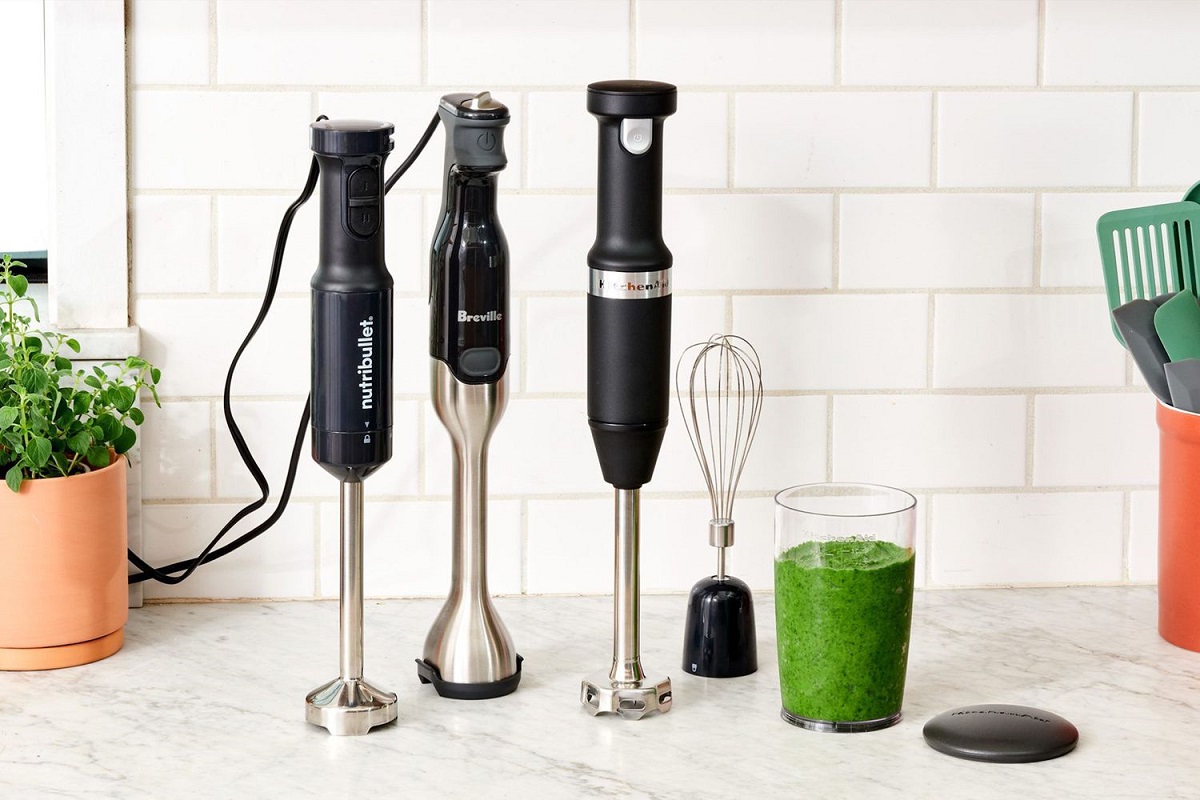
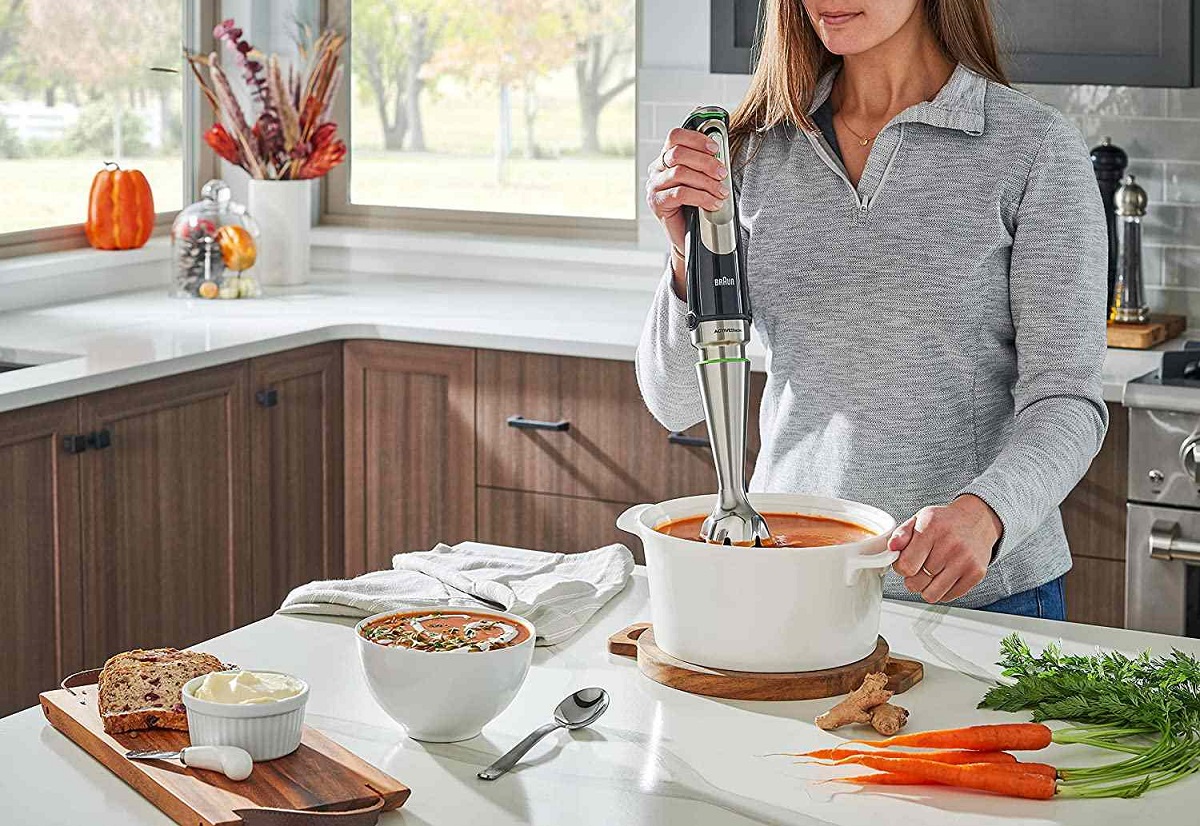
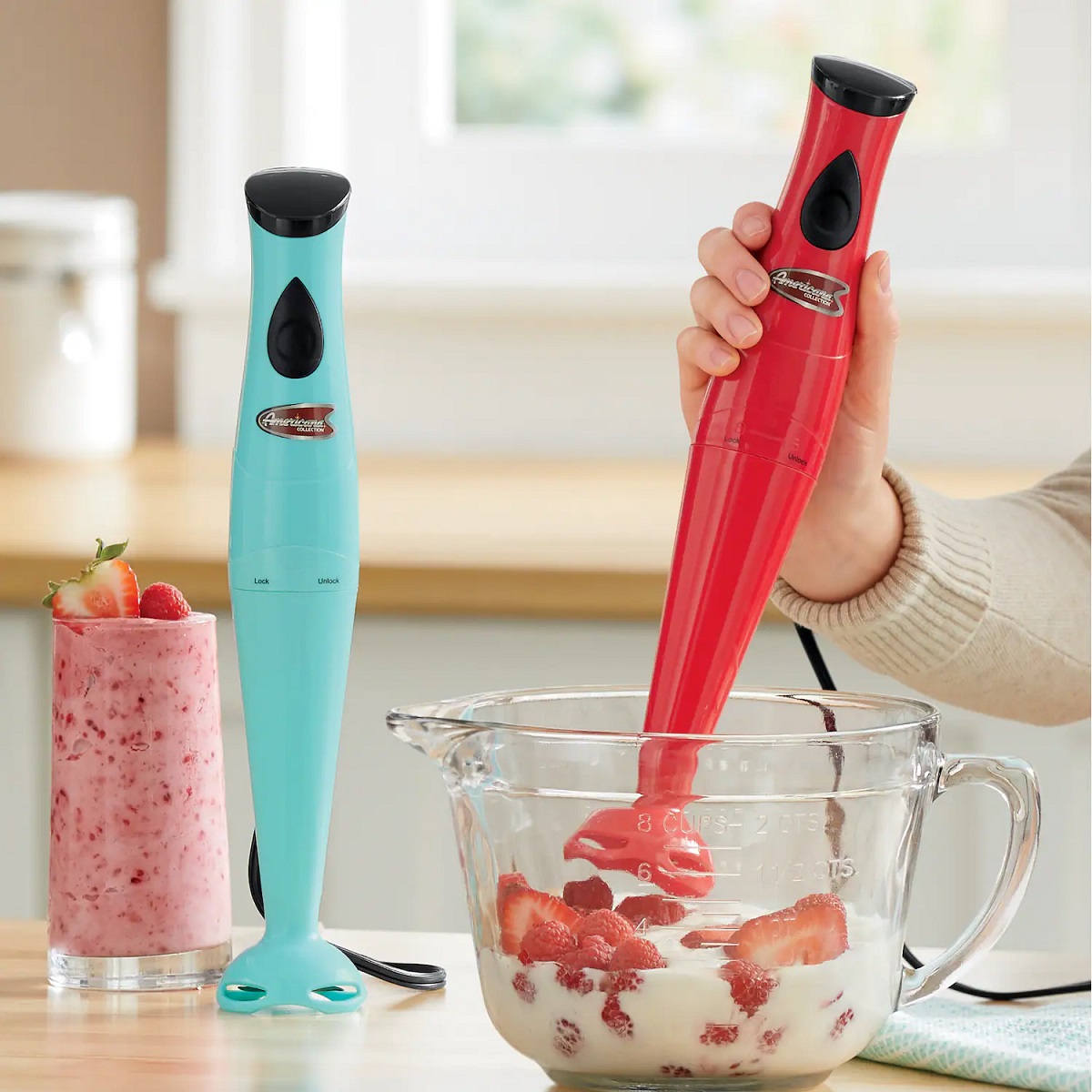
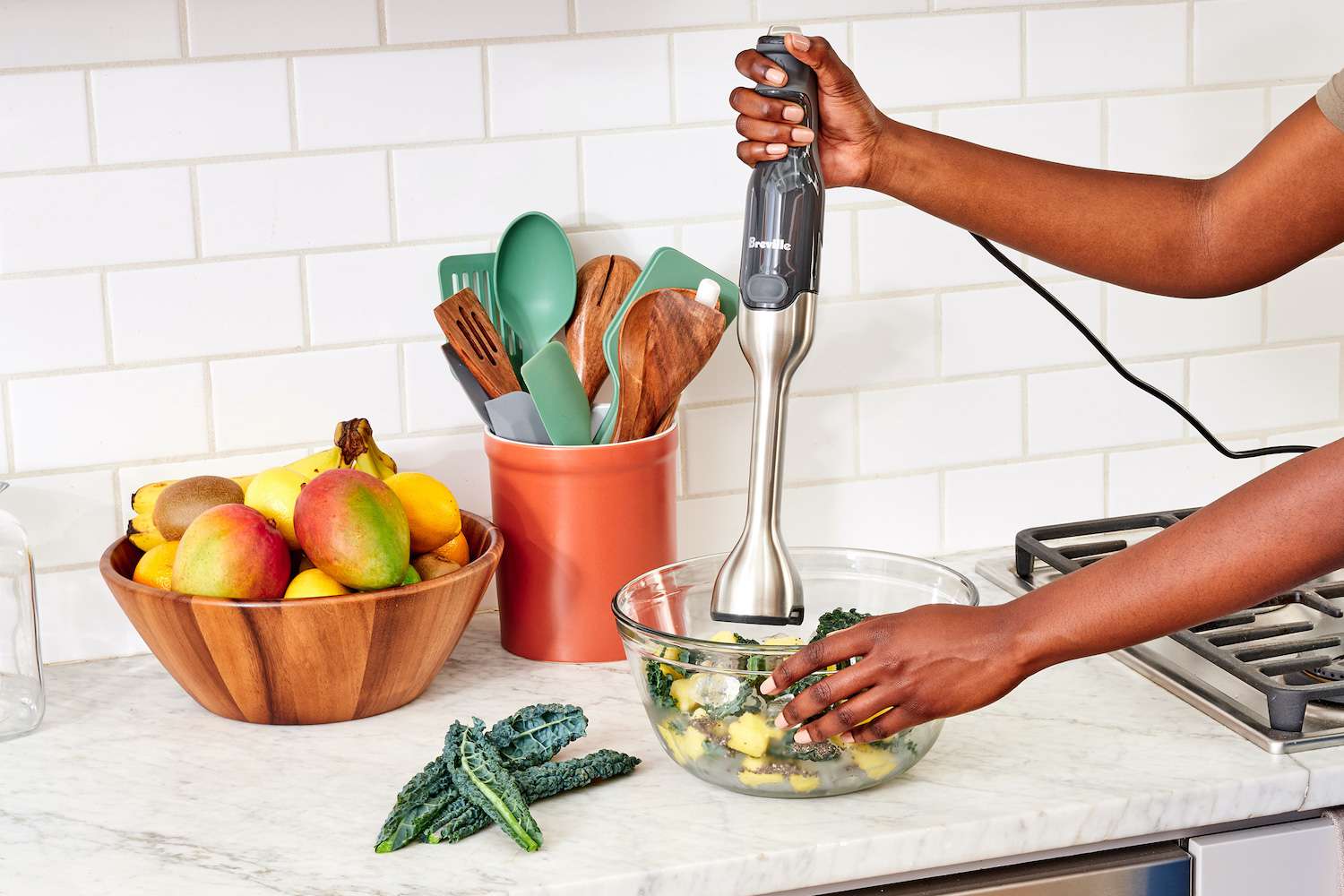
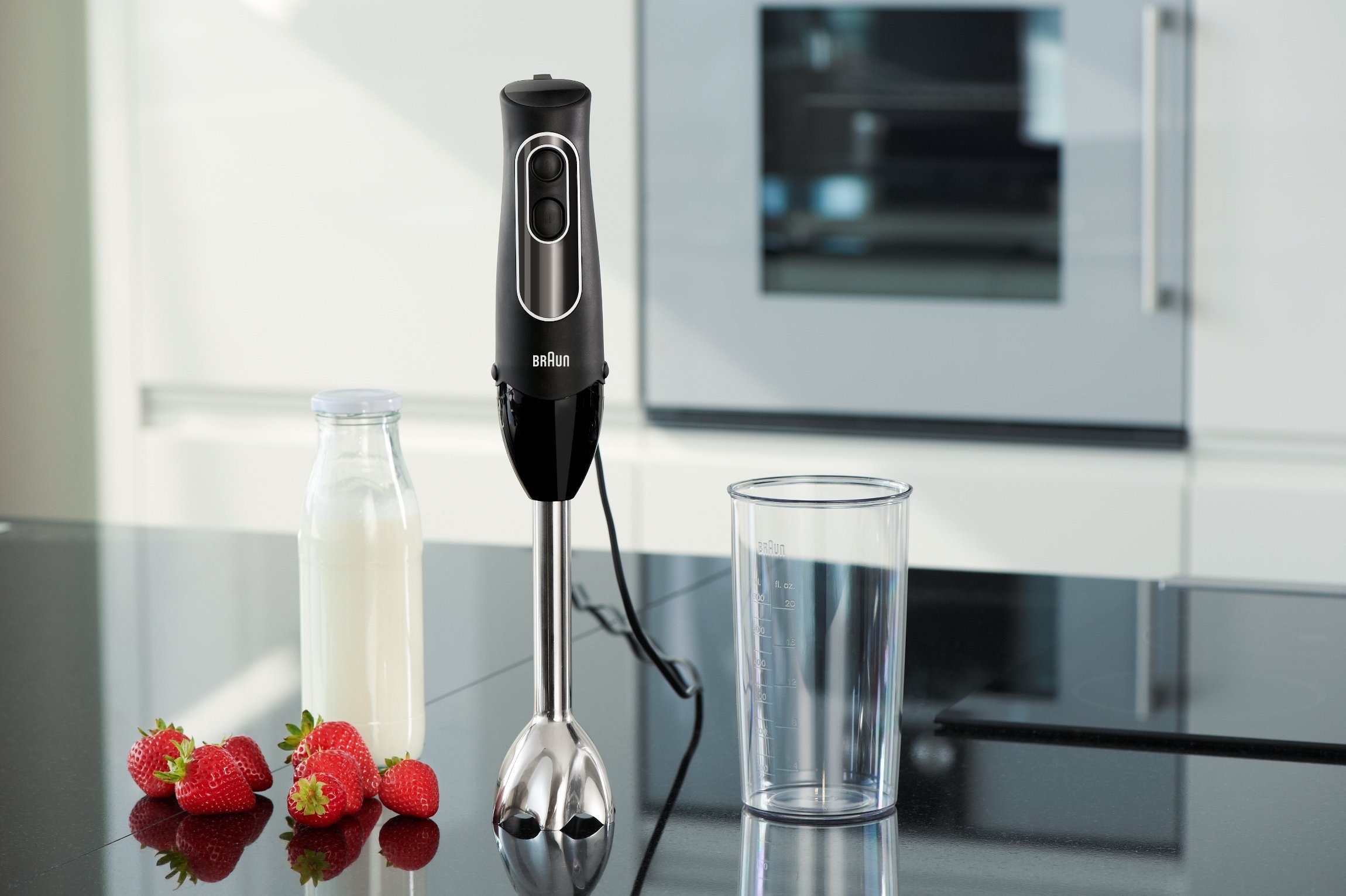
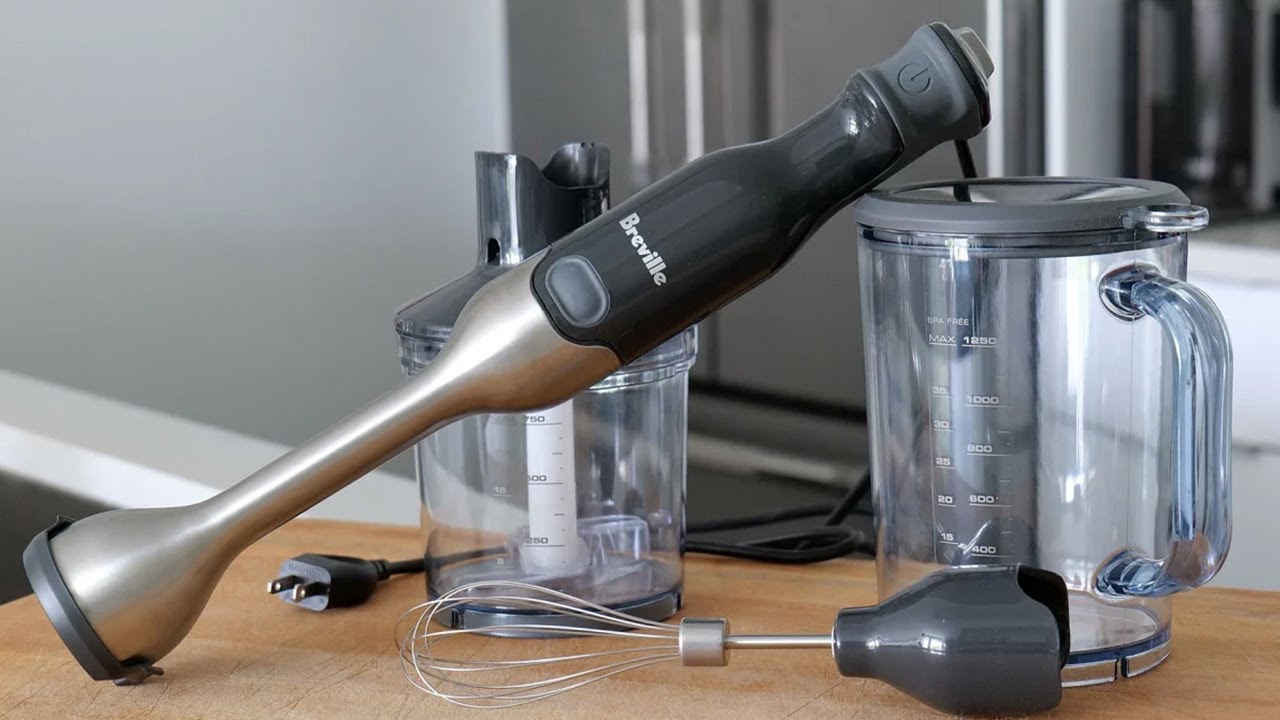
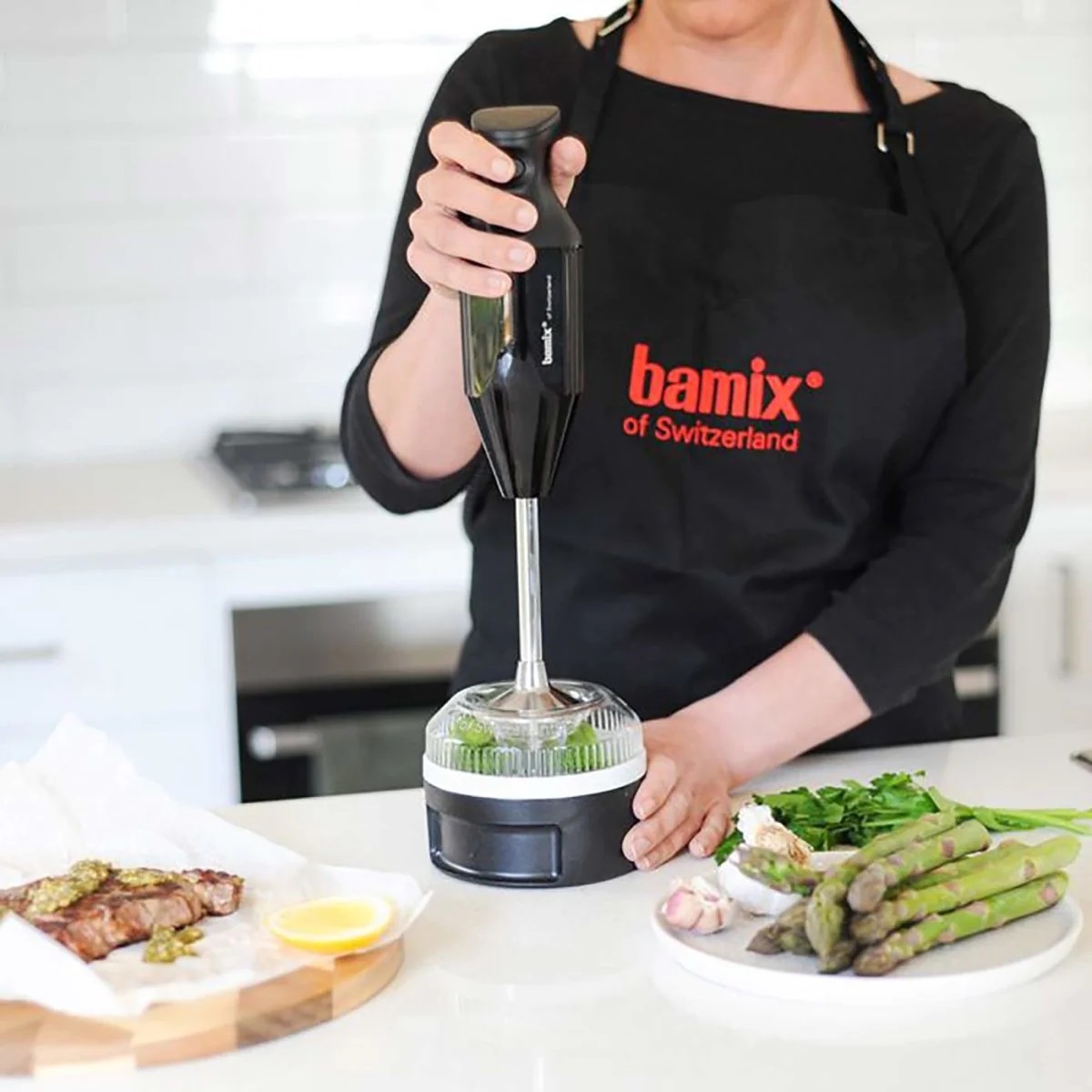

0 thoughts on “What Is An Immersion Blender?”